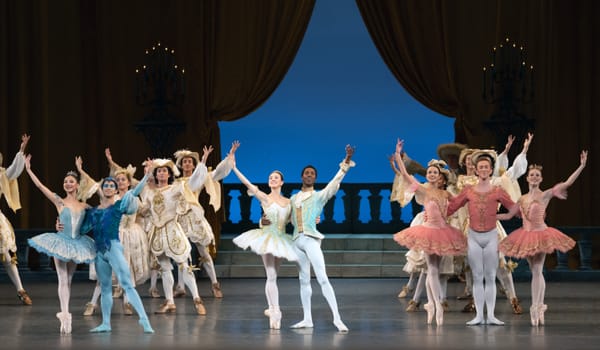Enduring Representations
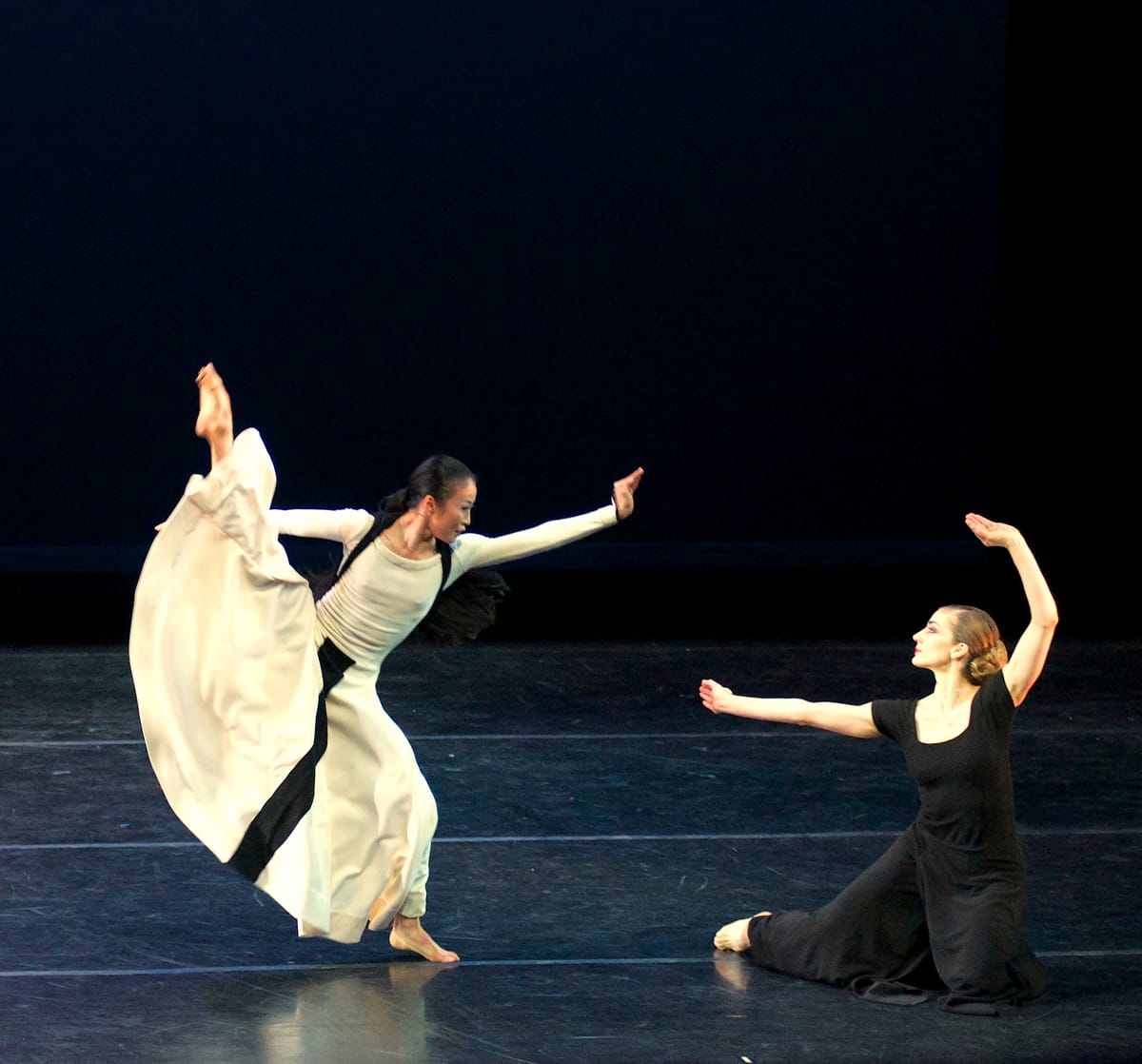
“Satyric Festival Song,” “Embattled Garden,” “Lamentation Variations,” “Rust,” “Chronicle”
Martha Graham Dance Company
The Joyce Theater
New York, NY
February 12, 2015
Though the theme of Martha Graham Dance Company’s winter season was “Shape & Design,” Program A appeared to be more about history and the endurance of Martha Graham’s innovation and use of modern dance to convey a message. Following a short silent film by Peter Arnell which organized over 2,000 still photographs into what appeared to be a highly sophisticated video footage of distinctly Graham-style movement and which played as the audience was still getting to their seats, the evening’s program contained three original works by Graham, three “Lamentation Variations” inspired by Graham’s “Lamentation” piece, and a separate work created for the company by the Spanish choreographer Nacho Duato.
The evening began on a light note with “Satyric Festival Song,” and then proceeded to explore serious subjects through dance. Even this starting work though, one Graham created in 1932 in part to make fun of herself and her own seriousness, had somber undertones. Yin Xin, who performed the piece, must have been preparing herself for the heavier works that followed, and did not allow enough humor and mischief to come through even in the cute pops of the hip, foot tapping, and quick small runs. Though the insufficient playfulness gave the dance cracks of weakness, the octogenarian piece was still remarkable in its freshness and relevance, and proved it has great staying power.
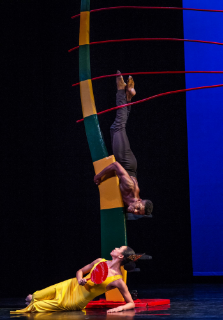
Graham’s “Embattled Garden” was second on the program, and began the evening’s journey into more serious subjects in earnest with its portrayal of complications that can surround a relationship even in the blissful paradise of Eden. Natasha M. Diamond-Walker as a very seductive and confident Lilith and Lloyd Knight as The Stranger (the snake character) were powerful forces when they injected themselves into the harmony of Adam and Eve’s relationship. As Tadej Brdnik’s Adam pursued his fascination with Lilith, the staccato tones in his angular movements and shapes contrasted more and more the increasing plasticity and many isolations in Xiao Chuan Xie’s Eve’s movements. Though in the end Adam and Eve’s relationship is forever altered, the story was conveyed so seamlessly by the dancers that this change seemed both unavoidable and unanticipated.
Following this welcome into Graham’s world and physical language came “Lamentation Variations,” a project that started in 2007 to commem- orate the tragedy of the September 11 attacks which invited choreographers to create responsive works to Graham’s famous exploration of grief in her “Lamentation,” all to be performed within 4 minutes, use no sets, and to be created in under 10 hours of rehearsal time. Despite these limitations, the results ended up being remarkable and speak to both the talents of these choreographers and Graham’s inspirational power.
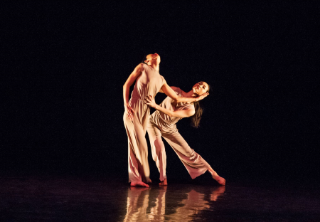
The first of the works was one of the original variations by Larry Keigwin, a deeply moving piece featuring the entire company. To the ethereal, suspended notes of Chopin’s Nocturne No. 5, the dancers stood on stage in evening attire and repeated similar slow movements, touching their own faces, moving their arms, rocking from side to side. But although their physical experiences seemed to be the same, they all expressed them somewhat differently. As the piece progressed, the shell-shocked looking dancers appeared to be coping with grief in their own ways. Some in their midst moved through the crowd, searching for something, others hugged, while other dancers faded away, kneeling down and collapsing on the floor. Only one couple remained standing to the final notes of Chopin’s nocturne, but as the man comfortingly embraced the woman, she slipped down through his arms, leaving him standing and holding the empty space she once occupied.
This somber but peaceful look at grief was followed by the first new piece which had its premiere during this season, choreo- graphed by Kyle Abraham. In the work, two female dancers, XiaoChuan Xie and Ying Xin (on other nights the same work is danced by two male dancers), began by standing in a stream of light on a dark stage in similar light colored costumes. As the work progressed, the two dancers’ movements appeared both connected and reflective of each other. They repeated some of each other's steps, and treated others differently, such as when one dancer remained standing still, and the other instead reached longingly with a leg in a passe. The duo could have either been two supporting sides of one whole, a reflection of one protagonist’s multiple ways of reconciling her grief, or a person’s discovery of another going through the same experience and coping in a somewhat different way. With so many possible interpretations and meanings, the work seems to be a hidden wonder, bound to reveal more of itself with repeat viewing and different casts.
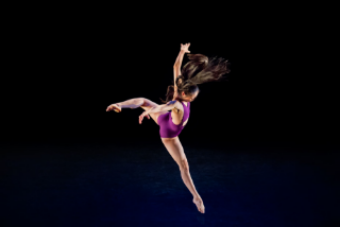
The second new variation of the night, choreographed by Sonya Tayeh was distinctly different from the other two, pulsing with energy and resistance. Tayeh, who may be known to readers as the choreographer from the popular Fox show “So You Think You Can Dance,” described her view of the variation as a sort of second part to Graham’s “Lamentation”: a look at what happens when the Graham piece’s restricting tube costume of grief is stripped off. Set to distressed music by Meredith Monk that is punctuated with heavy breathing sounds, this piece for four women and three men was more sensual, rebellious and preoccupied. Beginning with a woman in a cut out purple leotard dragged onto the stage in a lift by two men, the piece seemed to represent the woman’s struggle against underlying forces, and the men appeared to be her demons. She fought them valiantly, seducing them, then overpowering them, all with great emotional and physical flexibility. As other women appeared, clad in similar stripped-down costumes, they faced similar struggles and also resorted to athleticism and amplitude as their coping mechanisms. In the end they may or may not have been successful, as two men carried two of the women off, while others looked on as a running female collapsed at the end of her struggle. Still, this group’s approach to grief, or their response to its next stage or underpinnings, was fascinating and engaging.
After such a rich first half of the evening, it was good fortune that the program gave the viewers an intermission before exposing them to Nacho Duato's “Rust.” First choreo- graphed for the company in 2013 but having its New York premiere as part of this season, the ballet is Duato’s critique of torture. Never one to shy away from provocative and disturbing themes, the work “seeks to stir the awareness of a public who seem clinically indifferent to the true horror of torture” according to the bill, but Duato’s undertaking may have been an overly ambitious one.
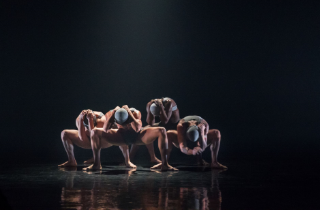
Shortly after the ballet began, a rectangle of light at the top of stage right presented two men torturing a prisoner. The movements, coupled with violent sounds of Pedro Alcalde’s contemporary music that enunciated each punch, shove, hit and more, felt remarkably real within the artificiality of choreography, and this section was extremely jarring and inventive. But following this short but disturbing display, the work sought to delve into the analytics of the horror of torture and its emotional impacts, and proved less effective. As the prisoner of the first scene crawled forward to Arvo Pärt’s liturgical-sounding “De Profundis,” and was joined by four other men, the piece became more descriptive and contemplative rather than eye-opening, and less choreographically creative as well.
The dancers’ portrayal straddled the line between being imprisoned by the idea and the actuality of torture, where they seemed its subjects, its purveyors, and its onlookers. At times they would cower, at times dash at the audience only to pause in fear, at times help collapsed victims of torture, at times hit their thighs with their fists as though in self-punishment and grab their throats in either self-suffocation or a quest to find their voices. Their struggles unresolved, they lifted their shirts to cover their faces, continuing their movements blinded until coming to a halt, sitting on their knees with their arms behind them as the lighting from stage left basked them in what looked like light coming through prison bars. Finally, one man stirred, removing the shirt from his face as bright light from the top of stage right illuminated him and proceeded to slowly scan the audience in an uncomfortably blinding way. It is possible that had this light gimmick followed a somewhat more focused illustration and message in the piece it would have served to physically connect the work with the audience, but after the wandering choreography of the second half, it was mostly just unpleasant.
Ending the night, Graham’s iconic 1936 work “Chronicle” seemed only fitting after the themes that preceded it, and somehow its message was most profound. With 9/11 and torture inspired works before it, the work seemed to have a particular relationship to time, but also timelessness. Revolutionary when it was first created, and largely inspired by the events of its historical context, the piece allowed both a look back at that time, but also showed its place in the present. The movements’ measures, symmetry and proportions in the piece, and Graham’s ability to demonstrate softness despite her employment of many straight lines, particularly in the “Prelude to Action” section of a duet between a woman in black and white in “Chronicle,” still look inventive today, and these aspects, coupled with a persuasive delivery of its anti-war themes, made for perhaps the most creative and refined choreographic display of the night.
copyright © 2015 by Marianne Adams
